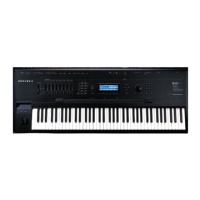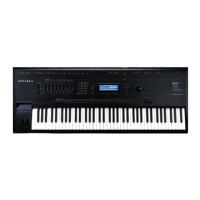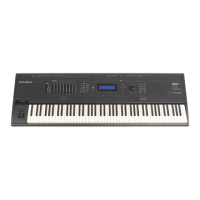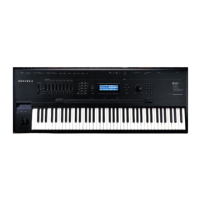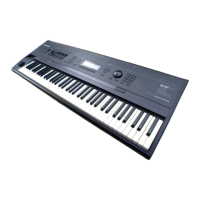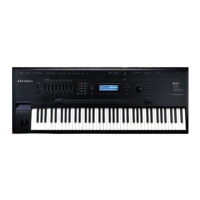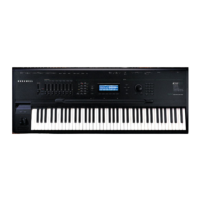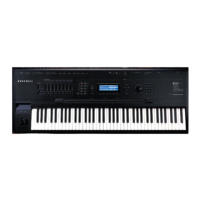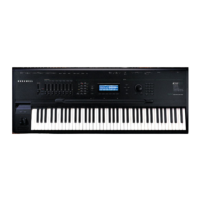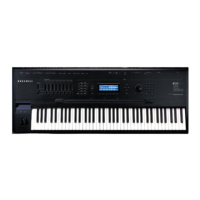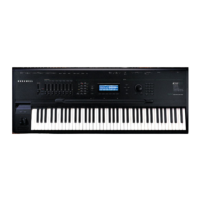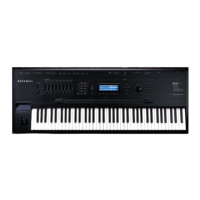System Exclusive Protocol
K2500 System Exclusive Implementation
11-2
decimal: 132
binary: 10000100
binary encoding for type(2) field: 0000001 0000100
decimal encoding for type(2) field: 1 4
Object name fields are sent as a string of ASCII values in a ‘name’ field, with one MIDI byte of
zero as a string terminator. For example, the name “Glass Kazoo” would be sent as letters:
G l a s s _ K a z o o <null>
hex encoding for ‘name’ field: 47 6C 61 73 73 20 4B 61 7A 6F 6F 00
Data sizes and offsets are sent in the ‘size’ and ‘offs’ fields.These values refer to quantities of 8-
bit bytes in the K2500’s memory, which is packed in the ‘data’ field.
Binary data in the ‘data’ field is sent by in one of two formats, according to the value of the
‘form’ field. If the ‘form’ field equals zero, the data is transmitted as 4 bits or one “nibble” in
every MIDI byte. If the ‘form’ field equals one, then the data is sent as a compressed bit-stream,
with 7 bits per midi byte. The bit-stream format is more efficient for data-transmission, while
the nibble format is easier to read (and write software for).
For example, to send the following four K2500 data bytes,
hex: 4F D8 01 29
decimal: 79 216 1 41
binary: 01001111 11011000 00000001 00101001
eight MIDI bytes are sent in “nibble” format:
hex: 04 0F 0D 08 00 01 02 09
decimal: 4 15 13 80129
binary: 0000100 0001111 0001101 0001000 0000000 0000001 0000010 0001001
five MIDI bytes are sent in bit-stream format:
hex: 27 76 0 12 48
decimal: 39 118 0 18 72
binary: 0100111 1110110 0000000 0010010 1001000
The bit-stream format can be thought of as taking the binary bits of the K2500 data and, starting
from the left, slicing off groups of 7 bits. Note that the trailing bits are set to zero.
After the ‘data’ field, there is another field, ‘xsum’. This is a checksum field which is calculated
as the least significant 7-bits of the sum of all of the MIDI bytes that make up the ‘data’ field.
Messages
This section defines the K2500 System Exclusive message formats. Each message has a message
type (that goes in the ‘msg-type’ field; see Common Format, above), followed by the field
definitions of the message.
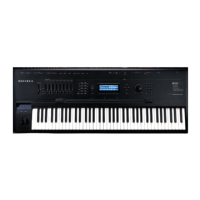
